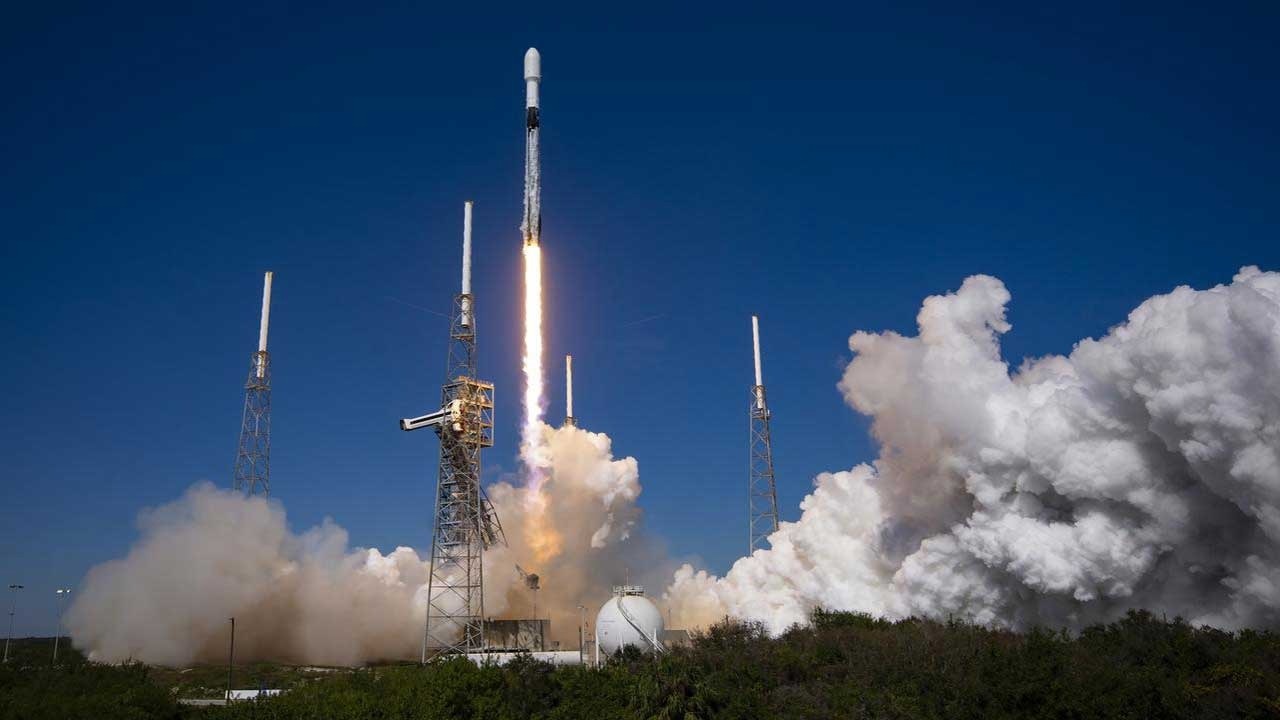New fiber optics experiments sponsored by the International Space Station (ISS) National Laboratory launched on Northrop Grumman’s 20th Commercial Resupply Services (NG-20) mission. These experiments will test Flawless Photonics, Inc.'s unique approach to solving the issue of gravity-induced defects in optical glass products manufactured on Earth.
 Northrop Grumman’s Cygnus spacecraft, atop a SpaceX Falcon 9 rocket, heads to the ISS for the 20th Northrop Grumman resupply mission on Jan. 30, 2024. Image courtesy of SpaceX
Northrop Grumman’s Cygnus spacecraft, atop a SpaceX Falcon 9 rocket, heads to the ISS for the 20th Northrop Grumman resupply mission on Jan. 30, 2024. Image courtesy of SpaceX
To eliminate such defects, Flawless Photonics aims to validate the company’s method for manufacturing various glass materials in space, beginning with ZBLAN. ZBLAN is a type of optical glass with many applications, such as communications, sensors, and laser technology. It can perform up to 100 times better than silica, but current terrestrial restrictions limit its full potential.
“We have uncovered a new approach to manufacturing ZBLAN in space that promises to unlock its full capabilities and radically advance the optical fiber market,” said Michael Vestel, the principal investigator of the project and CTO of Flawless Photonics. “Testing our unique approach on the space station will provide crucial data to advance breakthrough materials for telecommunications, defense, medical devices, and quantum computing."
Flawless Photonics seeks to develop fiber manufacturing processes that outperform existing options. The real-world benefits of these fibers on Earth are substantial, promising to revolutionize optical communication technologies, Vestel said.
Hubert Moser, senior director of engineering at the company’s Luxembourg lab, added, "This mission is a crucial milestone for Flawless Photonics. Its primary focus is deploying our cutting-edge autonomous manufacturing platform and establishing new paradigms in optical fiber technology and furthering in-space manufacturing."
Optical fiber drawn during the experiments will return on SpaceX’s 30th Commercial Resupply Services (CRS) mission in April. The Flawless Photonics manufacturing platform will stay on the space station for future use.
The NG-20 mission launched from Cape Canaveral Space Force Station on January 30 at 12:07 pm EST onboard a SpaceX Falcon 9 rocket. This mission included more than 20 ISS National Lab-sponsored payloads. Please visit our launch page to learn more about all ISS National Lab-sponsored research on this mission.